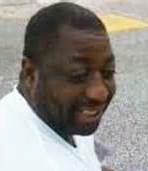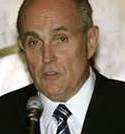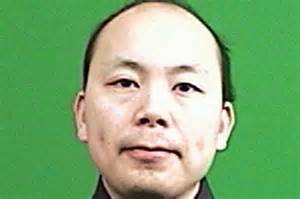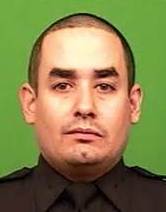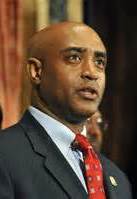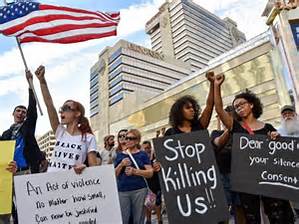 For many, the issue of police brutality and the social upheaval it brings was brought home with the killing of Michael Brown two years ago in Ferguson, Missouri, and the cell phone video-inspired emergence of a nationwide protest movement centered on police violence and abuse against Black people and other people of color. Just before that, of course, was the killing of Trayvon Martin by police-wannabe George Zimmerman and the rise of Black Lives Matter as protests started spreading across the nation. Some of us remember Abner Louima (1997), Amadou Diallo (1999) and Sean Bell (2006) in New York City, and Oscar Grant in Oakland and Adolph Grimes in New Orleans, both on New Year’s Day 2009. For others, it was the 1991 beating of motorist Rodney King, the first time many of us ever saw videographic evidence of police brutality, and the 1992 Los Angeles “Rebellion” (or “riots”, depending on your perspective) that followed. Those with more of a sense of history will recall the August 28, 1955 lynching of Emmett Till by an angry mob of White vigilantes, or the bombing of Black Wall Street in Tulsa, Oklahoma in 1921, both under the direction of White hate groups like the Ku Klux Klan but clearly with the acquiescence of local law enforcement. And those who want to go “all the way back” will point out the fact that the earliest municipal police departments were often commissioned to pursue runaway slaves in enforcement of the Fugitive Slave Acts of 1793 and 1850, a pursuit reminiscent of the slave catchers that kidnapped our Ancestors from Afrika in the first place. Despite the recent killings of Martin, Brown, Eric Garner, Sandra Bland, Walter Scott, Tyrone West, Freddie Gray and so many other, lesser-known victims of police brutality over the last two years, the annual fireworks spectacle on July 4th seemed to provide a chance for many of us to marvel at the rockets’ red glare, revel in the belief in (or the illusion of) “one nation indivisible” and go back to sleep for a while.
For many, the issue of police brutality and the social upheaval it brings was brought home with the killing of Michael Brown two years ago in Ferguson, Missouri, and the cell phone video-inspired emergence of a nationwide protest movement centered on police violence and abuse against Black people and other people of color. Just before that, of course, was the killing of Trayvon Martin by police-wannabe George Zimmerman and the rise of Black Lives Matter as protests started spreading across the nation. Some of us remember Abner Louima (1997), Amadou Diallo (1999) and Sean Bell (2006) in New York City, and Oscar Grant in Oakland and Adolph Grimes in New Orleans, both on New Year’s Day 2009. For others, it was the 1991 beating of motorist Rodney King, the first time many of us ever saw videographic evidence of police brutality, and the 1992 Los Angeles “Rebellion” (or “riots”, depending on your perspective) that followed. Those with more of a sense of history will recall the August 28, 1955 lynching of Emmett Till by an angry mob of White vigilantes, or the bombing of Black Wall Street in Tulsa, Oklahoma in 1921, both under the direction of White hate groups like the Ku Klux Klan but clearly with the acquiescence of local law enforcement. And those who want to go “all the way back” will point out the fact that the earliest municipal police departments were often commissioned to pursue runaway slaves in enforcement of the Fugitive Slave Acts of 1793 and 1850, a pursuit reminiscent of the slave catchers that kidnapped our Ancestors from Afrika in the first place. Despite the recent killings of Martin, Brown, Eric Garner, Sandra Bland, Walter Scott, Tyrone West, Freddie Gray and so many other, lesser-known victims of police brutality over the last two years, the annual fireworks spectacle on July 4th seemed to provide a chance for many of us to marvel at the rockets’ red glare, revel in the belief in (or the illusion of) “one nation indivisible” and go back to sleep for a while.
But one day after Americans engaged in their often food-stuffed and drink-soaked 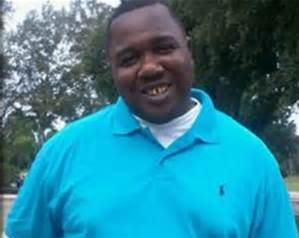 celebration of the independence of the United States, Alton Sterling (June 14, 1979 – July 5, 2016), known locally as “CD Man”, was shot and killed by police officers in Baton Rouge, Louisiana as he was selling compact disks outside a convenience store. This account of the events of that day comes from Wikipedia(https://en.wikipedia.org/wiki/Shooting_of_Alton_Sterling):
celebration of the independence of the United States, Alton Sterling (June 14, 1979 – July 5, 2016), known locally as “CD Man”, was shot and killed by police officers in Baton Rouge, Louisiana as he was selling compact disks outside a convenience store. This account of the events of that day comes from Wikipedia(https://en.wikipedia.org/wiki/Shooting_of_Alton_Sterling):
The owner of the store where the shooting occurred, Abdullah Muflahi, said that Sterling had started carrying a gun a few days prior to the event, because other CD vendors had been robbed recently. Muflahi also said that Sterling was “not the one causing trouble” during the situation that led to the police being called.
The police officers involved in the shooting were Howie Lake II and Blane Salamoni. Lake had three years of law enforcement experience which included a previous shooting of an African-American male for which he was placed on department-mandated leave; Salamoni had four years of experience.[8] Salamoni and Lake had both been previously investigated, and cleared for use of excessive force.
At 12:35 p.m., at 2112 North Foster Drive, in the parking lot of Triple S Food Mart, Sterling was detained by Baton Rouge Police Department officers after an anonymous caller reported that a man believed to be Sterling was threatening him and waving or brandishing a handgun while in the process of selling CDs. Sterling was tasered by the officers, then the officer grabbed Sterling, who was of heavy build, and tackled him to the hood of a silver sedan and then to the ground. Sterling was pinned to the ground by both officers, with one kneeling on his chest and the other on his thigh, both attempting to control his arms.
One officer exclaimed, “He’s got a gun! Gun!” One of the officers yelled, “If you f##king move, I swear to God!” Then Salamoni was heard on the video saying, “Lake, he’s going for the gun!” One of the officers aimed his gun at Sterling’s body, then three gunshots are heard, and then the camera pans away; just before the camera pans back, three more gunshots are heard. The police officer sitting on Sterling’s chest is out of the picture, and the officer who drew the gun is about a meter away with his gun trained on Sterling, who has a clear gunshot wound in his chest. According to witness Abdullah Muflahi, the officers then retrieved a firearm from Sterling’s pocket. The officers then radioed for Emergency Medical Services.
According to Parish Coroner William Clark of East Baton Rouge, a preliminary autopsy on July 5th indicated that Sterling had died due to multiple gunshot wounds to the chest and back.
Multiple bystander cell phones captured video of the shooting, in addition to store surveillance and officer body cameras. One of the bystander videos was filmed by a group called “Stop the Killing” which listens to police scanners and films crimes in progress as well as police interactions in an effort to reduce violence in the community. A second video was made available the day after the shooting by the store owner and eyewitness Abdullah Muflahi. In a statement to NBC News, Muflahi said that Sterling never wielded the gun or threatened the officers.
On the night of July 5, more than 100 demonstrators in Baton Rouge shouted “no justice, no peace,” set off fireworks, and blocked an intersection to protest Sterling’s death. Flowers and messages were left at the place of his death. …
On July 6, Black Lives Matter held a candlelight vigil in Baton Rouge, with chants of “We love Baton Rouge” and calls for justice.
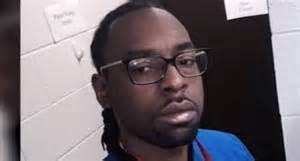 Then, as though following the unfortunate tradition that one bad turn must lead to another, Philando Castile was killed by a Minnesota police officer during what was supposed to be a routine traffic stop (https://en.wikipedia.org/wiki/Shooting_of_Philando_Castile):
Then, as though following the unfortunate tradition that one bad turn must lead to another, Philando Castile was killed by a Minnesota police officer during what was supposed to be a routine traffic stop (https://en.wikipedia.org/wiki/Shooting_of_Philando_Castile):
On July 6, 2016, Philando Castile was fatally shot by Jeronimo Yanez, a St. Anthony, Minnesota police officer, after being pulled over in Falcon Heights, a suburb of St. Paul. Castile was driving a car with his girlfriend, Diamond Reynolds, and her four-year-old daughter as passengers when he was pulled over by Yanez and another officer. According to Reynolds, after being asked for his license and registration, Castile told the officer he was licensed to carry a concealed weapon and had one in the car. Reynolds stated: “The officer said don’t move. As he was putting his hands back up, the officer shot him in the arm four or five times.”
Diamond Reynolds live-streamed a video on Facebook in the immediate aftermath of the shooting. It shows her interacting with the armed officer as a mortally injured Castile lay slumped over, moaning slightly and bleeding from his left arm and side. The Hennepin County Medical Examiner’s office ruled Castile’s death a homicide and said he had sustained multiple gunshot wounds. The office reported that Castile died at 9:37 p.m. CDT in the emergency room of the Hennepin County Medical Center, about 20 minutes after being shot.
Philando Divall Castile (July 16, 1983 – July 6, 2016) was 32 years old at the time of his death.[
Micah Xavier Johnson
Just as the nation was beginning yet another perfunctory discussion about the precariousness of Black lives at the hand of police, Micah Xavier Johnson rather brutally turned the tables (https://en.wikipedia.org/wiki/2016_shooting_of_Dallas_police_officers):
On July 7, 2016, Micah Xavier Johnson ambushed and fired upon a group of police officers in Dallas, Texas, killing five officers and injuring nine others. Two bystanders were also wounded. Johnson was an Army Reserve Afghan War veteran who was reportedly angry over police shootings of black men and stated that he wanted to kill white people, especially white police officers. The shooting happened at the end of a peaceful Black Lives Matter-organized protest against police killings of Alton Sterling in Baton Rouge, Louisiana, and Philando Castile in Falcon Heights, Minnesota, which had occurred in the preceding days.
Following the shooting, Johnson fled inside a building on the campus of El Centro College. Police followed him there, and a standoff ensued. In the early hours of July 8, police killed Johnson with a bomb attached to a remote control bomb disposal robot. It was the first time U.S. law enforcement used a robot to kill a suspect.
Reaction to the Shootings
National and international reaction to the shootings of Sterling, Castile and the Dallas police officers included public statements calling for racial justice from entertainers such as Nick Cannon, Snoop Dogg and even White rapper Macklemore; travel advisories from the governments of the Bahamas, Bahrain and the United Arab Emirates that cited racial tensions in the United States; and a statement from the United Nations High Commissioner for Human Rights (UNHCHR) condemning the killings of Sterling and Castile. Protests in Baton Rouge led to arrests and some injuries as policed clashed with demonstrators (https://en.wikipedia.org/wiki/Shooting_of_Alton_Sterling):
On July 8, the Office of the United Nations High Commissioner for Human Rights (OHCHR) issued a statement strongly condemning Sterling and Castile’s killings. Human rights expert Ricardo A. Sunga III, the current Chair of the United Nations Working Group of Experts on People of African Descent, stated that the killings demonstrate “a high level of structural and institutional racism” in the U.S., adding that “the United States is far from recognizing the same rights for all its citizens. Existing measures to address racist crimes motivated by prejudice are insufficient and have failed to stop the killings”. …
Professor Peniel E. Joseph, founding director of the Center for the Study of Race and Democracy at Tufts University, editorialized that “the deaths of Alton Sterling and Philando Castile evoke the past spectacle of lynching” and that for change to happen, Americans must confront the pain of black history. …
Louisiana U.S. Representative Cedric Richmond said that the footage of Sterling’s shooting is “deeply troubling” and called for a U.S. Department of Justice investigation into the man’s death. Governor John Bel Edwards announced on July 6 that the Department of Justice would launch an investigation. A civil rights investigation was opened by the Department of Justice on July 7.
Again, from https://en.wikipedia.org/wiki/Shooting_of_Alton_Sterling:
Speaking shortly after the shootings of Sterling and Philando Castile, President Barack Obama did not comment on the specific incidents, but called upon the U.S. to “do better.” He also said “Americans should feel outraged at episodes of police brutality since they’re rooted in long-simmering racial discord.”
Gavin Eugene Long
Then, on July 17, Gavin Eugene Long shot six police officers in Baton Rouge, the city where Sterling had been killed by police 12 days earlier. Three officers died, two of whom were members of the Baton Rouge Police Department and the third of whom was a deputy for the East Baton Rouge Sherriff’s Office. Long was shot and killed by a SWAT officer during the shootout. While some reports have linked him to so-called “Black separatist” organizations and have even attempted to blame Black Lives Matter for the shootings of police officers, others have pointed to the written statements of both men that they were acting alone, and a few people we have spoken with have cited the failure to release the recordings of police negotiations with Micah Xavier Johnson to bolster their belief that he and Long may have been “patsies” as part of a series of “false flag” attacks designed to stir up racial tensions in the United States, usher in a more authoritarian government and reverse whatever gains were made during the Obama administration in the area of racial justice.
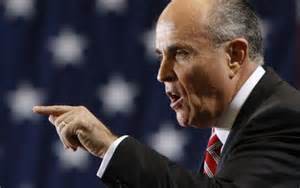
The Right Wing’s Bombast
Needless to say, as these events were unfolding, the backlash against the police-brutality protests was steadily escalating, from the emergence of the hashtags “All Lives Matter” and “Blue Lives Matter” to public statements from elected and former-elected officials. Former New York City mayor Rudolph Giuliani, known throughout at least the Black community for his “zero-tolerance” stance toward so-called “Black thugs” while he covered for New York City police officers’ acts of brutality (Abner Louima, Amadou Diallo, Sean Bell and many others), appeared on Meet The Press on Sunday, July 17 to publicly declare that the phrase “Black Lives Matter” was “inherently racist”. The slogans “Blue Lives Matter” and “All Lives Matter” began to gain in popularity, especially after two Black police officers publicly called for it at the Republican National Convention on Tuesday, July 19.
Giuliani and others have also directly accused Black Lives Matter of placing a target 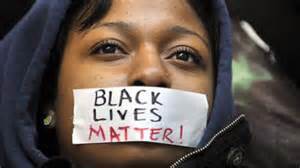 on the backs of police officers across the country and calling for the execution of police, despite no evidence whatsoever that any BLM activist has ever advocated for such a thing. But the racist vitriol didn’t stop there. Texas Republican Representative Louie Gohmert declared that President Obama has repeatedly failed to unite Americans after tragedies like the shooting in Dallas (http://thehill.com/blogs/blog-briefing-room/news/287057-gop-rep-obamas-divided-us-more-than-ever).
on the backs of police officers across the country and calling for the execution of police, despite no evidence whatsoever that any BLM activist has ever advocated for such a thing. But the racist vitriol didn’t stop there. Texas Republican Representative Louie Gohmert declared that President Obama has repeatedly failed to unite Americans after tragedies like the shooting in Dallas (http://thehill.com/blogs/blog-briefing-room/news/287057-gop-rep-obamas-divided-us-more-than-ever).
“He has divided us more than ever,” Gohmert said July 15 on Fox Business Network. “Every time there’s been a tragic shooting by police, he has taken the chance to call out police.
“He always comes out against the cops. This administration has supported Black Lives Matter as even their leaders have called out for killing cops. The president has failed miserably as he’s been so divisive.”
Needless to say, Gohmert demonstrates here one apparent prerequisite for becoming a right-wing public official: the liberal (pun intended) and consistent use of wild exaggeration, inflammatory (and unfounded) accusation and bombast for the purpose of stirring up racial tension and paranoia.
The Police: From Conflict to Compassion
Meanwhile, police departments across the United States have gone to “high alert” as their paranoia towards Black protesters has increased. Some might say that the recent events have forced police departments to become more conscious of the fear of being attacked and killed for no reason, something that Black motorists, pedestrians and children playing with toy guns have felt not only for the last two years, but for the past several decades. The fact that no one should have to live with this fear should go without saying, although Black people, from entertainers to athletes to elected officials to the President of the United States are expected to say this on behalf of “blue lives” while there are relatively few prominent police officers consistently saying this on behalf of Black lives. But there are some.
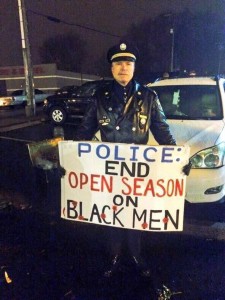 In spite of the multitude of bombastic comments that appear designed to increase tensions between the police and the citizenry (particularly the Black citizenry), there are White voices, and White police voices, that have swum against the current and have been raised against police brutality. A consistent voice in opposition of late has been that of retired Philadelphia Police Captain Ray Lewis (no, not the future Hall of Fame football player), who was once a self-admitted “brutal cop” who came to realize the abusive nature of his job and since that time has frequently been arrested, in full police uniform, while protesting against police brutality. His Facebook page (https://www.facebook.com/captainraylewis/) features a post that answered the question, Is “All Lives Matter” Racist?
In spite of the multitude of bombastic comments that appear designed to increase tensions between the police and the citizenry (particularly the Black citizenry), there are White voices, and White police voices, that have swum against the current and have been raised against police brutality. A consistent voice in opposition of late has been that of retired Philadelphia Police Captain Ray Lewis (no, not the future Hall of Fame football player), who was once a self-admitted “brutal cop” who came to realize the abusive nature of his job and since that time has frequently been arrested, in full police uniform, while protesting against police brutality. His Facebook page (https://www.facebook.com/captainraylewis/) features a post that answered the question, Is “All Lives Matter” Racist?
You betcha! It’s an attempt by white racists, to frame blacks, as ONLY caring about black lives with their “Black Lives Matter” slogan. Anyone with a minimal knowledge of language, realizes that if that was the message that blacks wanted to convey, the slogan would read, “ONLY Black Lives Matter.”
Captain Lewis also wrote a post titled “Alton Sterling Would Be Alive Today If He Were White”:
ALTON STERLING WOULD BE ALIVE TODAY IF HE WERE WHITE
The call was “anonymous,” and NO complainant was on the scene upon police arrival. The police had no reason… to even question him, let alone immediately tackle him.
WITHOUT A COMPLAINANT, nor seeing the individual waving a gun at others, there is NO job here! WITHOUT A COMPLAINANT no arrest can be made. The report is written up as UNFOUNDED, and the officers resume patrol. PERIOD! END OF STORY! And Alton Sterling is alive.
How do we make sense of this?
Investigations continue in an effort to determine whether or not Micah Johnson and Gavin Long acted alone, as well as what caused them to embark on their violent anti-police campaigns aside from their connections to military service (Iraq, Afghanistan) and their shared outrage over the continuing police violence against Black civilians which usually went unpunished (the killers of 12-year-old Tamir Rice in Cleveland, Michael Brown in Ferguson and Eric Garner in New York were never even charged, while the killers of Freddie Gray in Baltimore have now been acquitted in all three trials that have run to completion as of this writing).
At the same time, some in the Pan-Afrikan community are dealing with how they should regard these two vigilantes. These men apparently saw themselves as acting in response to the terrorism Black communities feel subjected to at the hands of a “colonial” police force, but at the same time they men committed acts of terrorism themselves by firing upon people who had made no aggressive actions toward them. Thus, they have been referred to as “cowards” by many in the mainstream press, as “martyrs” by some Black people who are themselves fed up with police violence against our communities, and as the “freest Black men on earth” by some who saw them as fighting back against the constraints put on us in our efforts to resist oppression. We do not see them as “cowards” simply because they had to know what the response would be to their actions, they took these actions personally and in the field of conflict (as opposed to launching a drone from a comfortable control room to strike a village halfway around the world), and they both paid with their lives in the end. We also do not see them as “martyrs” as use of that word would lend a degree of heroism to their actions than we see as warranted. After all, ambushing any unsuspecting group of people, cops or not, who were actually demonstrating at least some solidarity with the protesters – more than most police departments do nationally – would be seen by most of us as against the principles of Ma’at and this not as an honorable act. Too often, we see our young men come home from the theater of war damaged, as these men  apparently did, and they turn their skills at combat inward on themselves or outward against their own communities or against the police. And the result is often as we see here: a backlash against Black activism of any kind, an escalation of the militarization of police forces and a crackdown against the civil liberties of all those who would speak out in protest against the encroaching police state. Instead, what our young battle-tested but combat-weary men and women must do is come “home” to their people, learn to use their skills for the defense of their community instead of the assault on an enemy they often misidentify and cannot defeat, help to teach our young people how to use their skills constructively for their people, defend our community leaders from the gang-bangers as well as the storm-troopers, and heal themselves and our communities at the same time. In the face of heightened antagonism from the political right-wing, paranoia from the police and feelings of anger, confusion, misdirection, aggression and hopelessness from our own community, what we need now are safe spaces where we can share together, heal together, grow together and, most importantly, build together. Now more than ever, especially with the prospect of a new president in the White House whom many Black people will either distrust or outright fear, it is important for us to, as Ancestor Kwame Ture (Stokely Carmichael) said decades ago, organize, organize, organize.
apparently did, and they turn their skills at combat inward on themselves or outward against their own communities or against the police. And the result is often as we see here: a backlash against Black activism of any kind, an escalation of the militarization of police forces and a crackdown against the civil liberties of all those who would speak out in protest against the encroaching police state. Instead, what our young battle-tested but combat-weary men and women must do is come “home” to their people, learn to use their skills for the defense of their community instead of the assault on an enemy they often misidentify and cannot defeat, help to teach our young people how to use their skills constructively for their people, defend our community leaders from the gang-bangers as well as the storm-troopers, and heal themselves and our communities at the same time. In the face of heightened antagonism from the political right-wing, paranoia from the police and feelings of anger, confusion, misdirection, aggression and hopelessness from our own community, what we need now are safe spaces where we can share together, heal together, grow together and, most importantly, build together. Now more than ever, especially with the prospect of a new president in the White House whom many Black people will either distrust or outright fear, it is important for us to, as Ancestor Kwame Ture (Stokely Carmichael) said decades ago, organize, organize, organize.

